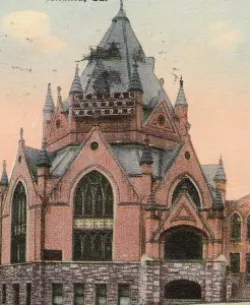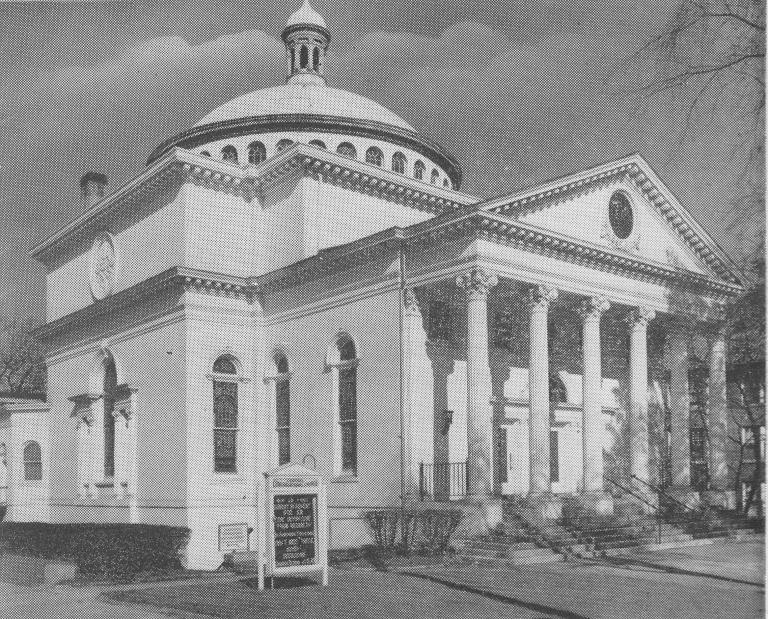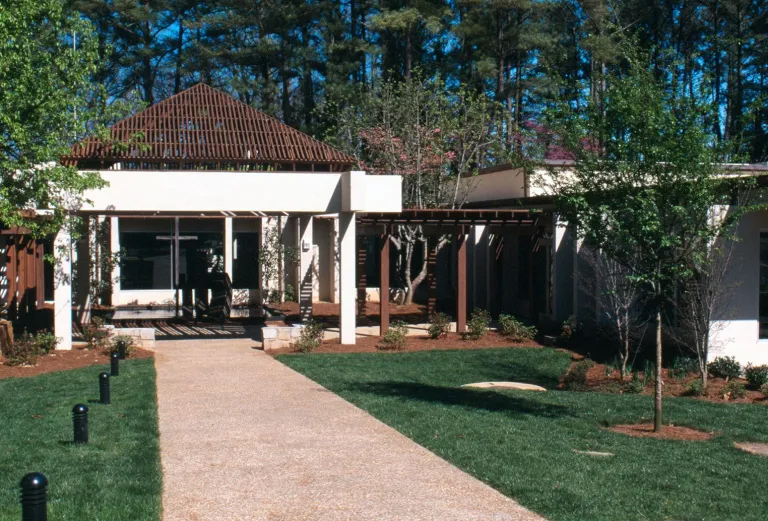404-633-4505 | Join Us On Sundays at 11AM!
404-633-4505 | Join Us On Sundays at 11AM!
Learn more about our church’s rich history.
Thank you, God, for the church: for the prayers and sacrifices of the faithful who gathered in times past, for their appreciation of beauty and commitment to justice, for their learning and their teaching, for their endowment of wood, stone, and glass; stitchery, finances, art, and books, that your story may continue to be proclaimed from this Clairmont place.
Our faith story begins “deep in the shadows of the past,” with desert nomads telling oral stories of faith around fires in the wilderness. New ideas of God were being formulated: a movement to monotheism, God as a unified being. Because they were “strangers in a new land,” a core commitment was made to the “strangers in our midst.” During terrible times of bondage and oppression, their understanding of justice and liberation were forged: “Go down, Moses, way down in Egypt land, tell all Pharaohs, to let my people go.” Our faith ancestors wandered and wondered in the wilderness, and found nourishment there in a Presence made know to them in manna and a pillar of fire. They journeyed to a Promised Land and established a new covenant community.
Practices of kindness, compassion, care for the poor and vulnerable were the bedrock of the shared life; there were times of plenty and want, periods of faithfulness and of broken promises, seasons of exile and domination. Prophets would rise up to call the people back to covenant living and proclaim hope for the emerging realm of God’s Lovingkindness. During the time of Roman occupation, Jesus came with a vision, mission and message of justice, mercy and love calling them to new and renewed practices of faith.
Through two millennia of reformation, challenges, schisms, and service, we are their ancestral heirs of faith—all the way to a new venture on September 6, 1882: Central’s founding day. Originally named Piedmont Congregational Church and holding our early meetings in the YMCA, then the defunct Georgia lottery building, and the Tallulah Fire Station before settling on Ellis Street, at one time we were “centrally” located. In our first year, with less than 35 members and the support of the American Home Missionary Society, we supported four missions to underprivileged Atlantans. One of our early and influential members, Frances Liggett Wey, established the first graded Sunday Schools in Atlanta and in 1908 founded the Student Aid Committee to grant loans for girls to go to school.
We built a chapel and other buildings on Ellis Street; the “Eddy Chapel,” named after our second Senior Minister, burned in 1910. Again, there were times of plenty and want, and we finally sold the property in 1929 and purchased a “used church” at Ponce and Piedmont (formerly Ponce de Leon Baptist Church) and had our first service there on January 5, 1930. The Depression was a particularly difficult time financially for Central and in 1933 a congregational meeting was called for the expressed purpose of disbanding the church. But the vote was not called! Dr. Amey Chappell (from whom we would later receive most of our Endowment funds) and three others made a passionate presentation and formulated a plan to move us forward.
We held together, stabilized (more or less) and even grew a bit. A turning point came on Sunday, February 20, 1944 with the beginning of Dr. Tom Anderson’s tenure as our longest-serving Senior Minister (17 years). Oft described as a “promoter” and “activity minded extrovert,” Dr. Tom used the “social media” of his time (newspaper, radio and streetcar advertisements), fashioned us as theologically “liberal,” and branded us as “A House of Inspiration.” His ministry at Central ended in the summer of 1961, but we still have a few members who worshiped at Ponce & Piedmont and knew Dr. Tom. In April 1965, at Central, the last of the segregated conferences of the UCC merged and the Southeast Conference UCC was born.
By 1965, however, the old building became financially unsustainable and the majority of the membership no longer lived in the neighborhood; therefore, a motion was passed at the Annual Meeting to explore relocation. The Building Committee, chaired by Dr. John Steinhaus, selected our current location and Kenneth Johnson as the architect. Dr. Steinhaus often told the story that Rev. Meyer wanted a “New England tall-steeple-style building, but was overruled.” On June 18, 1967, we broke ground and on May 5, 1968, the new building was dedicated. During construction we used “the granite house” on the property (which we still use) and worshipped at the Kittredge School on North Druid Hills.
In 1971, Rev. William T. (Bill) Scott was called as our nineteenth Senior Minister (and second longest in tenure). The basement, which had been left unfinished, was completed and the memorial walkway was added. In 1977, the first woman was ordained at Central (Rev. Kibbie Simmons Ruth) and at the Annual Meeting of that same year, we adopted our current congregational covenant:
With the freedom given us by God, we choose with loving concern for and responsibility to each other and the world, to walk together in all the ways of the Lord known to us and to be made known to us according to our best endeavors, the Lord assisting us.
In 1980, the congregation successfully paid off the grant mortgage that dated back to 1895 and helped to raise funds for the congregation that eventually would become Pilgrimage UCC in Marietta.
At the end of Rev. Scott’s tenure, the Rev. Mary Miller Brueggemann served as the Interim Senior Minister (1988) until the call of the Rev. Steve Sterner (1989). In 1991, we launched Plymouth Harbor and in the 1990s the first “Facilities Improvement Task Force” added the pipe organ and renovated the sanctuary (bringing the choir “out of the pit”). The improvements were made only with pledges in hand.
In 1996, the Rev. Budd Friend-Jones became our twenty-first Senior Minister and during his ministry a progressive Jewish community, Congregation Bet Haverim, and Open Community UCC, a Korean congregation, began to worship at Central. In 2002 the second “Facilities Improvement Task Force” led a $3 million project (requiring a new mortgage) that added the Commons, the office suite, the covered drive, made the building fully accessible (including the addition of the elevator) and upgraded the Fellowship Hall and kitchen.
From 2009 to 2019, the Rev. Shannon Michael Pater served as Senior Minister. Once again, the national fiscal crisis greatly impacted the congregation’s budget—and once again, Central found a way through and preserved its ministries. In 2016, the remaining $1 million mortgage was paid in full. Ivy and invasive species had put our forest at risk; now our campus is a Nature Preserve and our efforts at conservation continue to make the sacred space available for ministry (including Camp Beech Grove). We continue to proclaim a progressive and inclusive Christianity and, as a result of a significant gift, launched the Progressive Christianity Initiative that funded a pastoral fellowship, expanded our social media outreach, and helped to fund ads on NPR.
Oft named as a “favorite hymn” of the congregation, “In the Bulb There Is a Flower” has a turn of phrase that names Central’s long history well, not just the near 135 years, but back to the Hebrew nomads “deep in the shadows of the past:”
From the past will come the future; what it holds, a mystery, unrevealed until its season, something God alone can see.



Sign up to receive our newsletter!